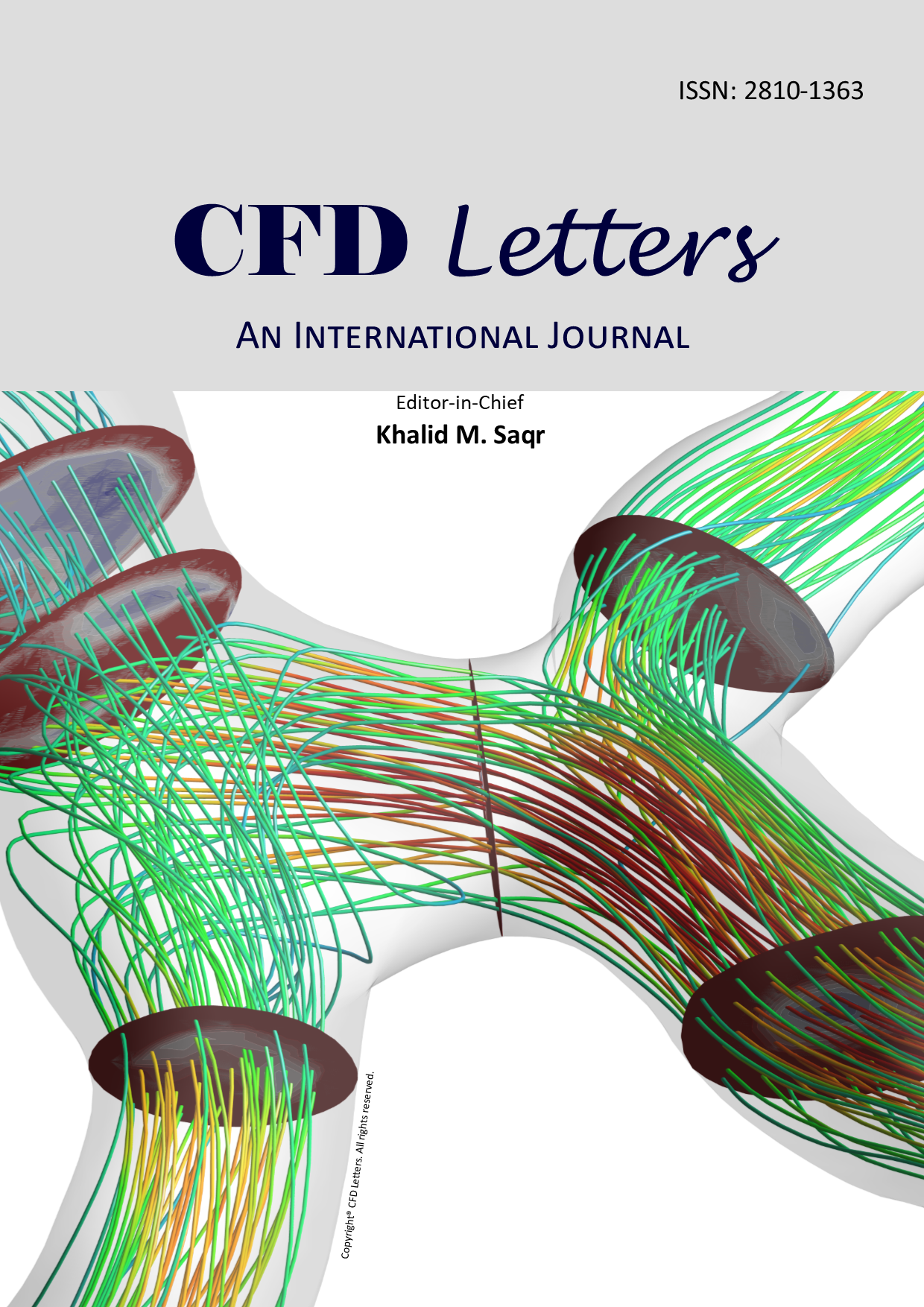The Effects of Internal Heat Generation or Absorption on Mixed Convection in a Lid-Driven Rectangular Cavity using Finite Volume Method
DOI:
https://doi.org/10.37934/cfdl.12.12.3854Keywords:
Finite volume method, heat absorption, heat generation, horizontal cavity, lid-drivenAbstract
Mixed convection heat transfer in cavities is a significant phenomenon in numerous engineering fields, such as nuclear reactors, solar energy storage, and heat exchangers. Despite acknowledging that a square is a basic shape found in these systems, not all the figures are geometrical. Less attention was given to the rectangle cavity even though it could be found in these systems. Various internal reactions could occur inside the systems, especially in geothermal heat exchangers. Therefore, this research aims to analyze the effect of internal heat generation or absorption in a two-dimensional (2D) horizontal cavity to the fluid flow and heat transfer process numerically. The vertical walls are well insulated. Meanwhile, the top and bottom walls are kept at and , respectively, where . The top wall moves at a constant speed from left to right. The finite volume method (FEM) and SIMPLE algorithm are employed to discretize the governing equations. Next, the algebraic equations are solved iteratively using the tri-diagonal matrix algorithm (TDMA). The influences of heat generation or absorption parameters are investigated in terms of the flow, heat transfer, and Nusselt number. The numerical results are plotted in the form of streamlines and isotherms. It is found that the presence of heat generation or absorption has a significant effect on the fluid flow and heat transfer process in the horizontal cavity. Overall, for internal heat generation, the heat transfer rate decreases, while the opposite pattern can be observed for the case of internal heat absorption. However, for Ri = 10.0, as the heat generation's value increases from 2 to 4, the heat transfer rate is the same.













